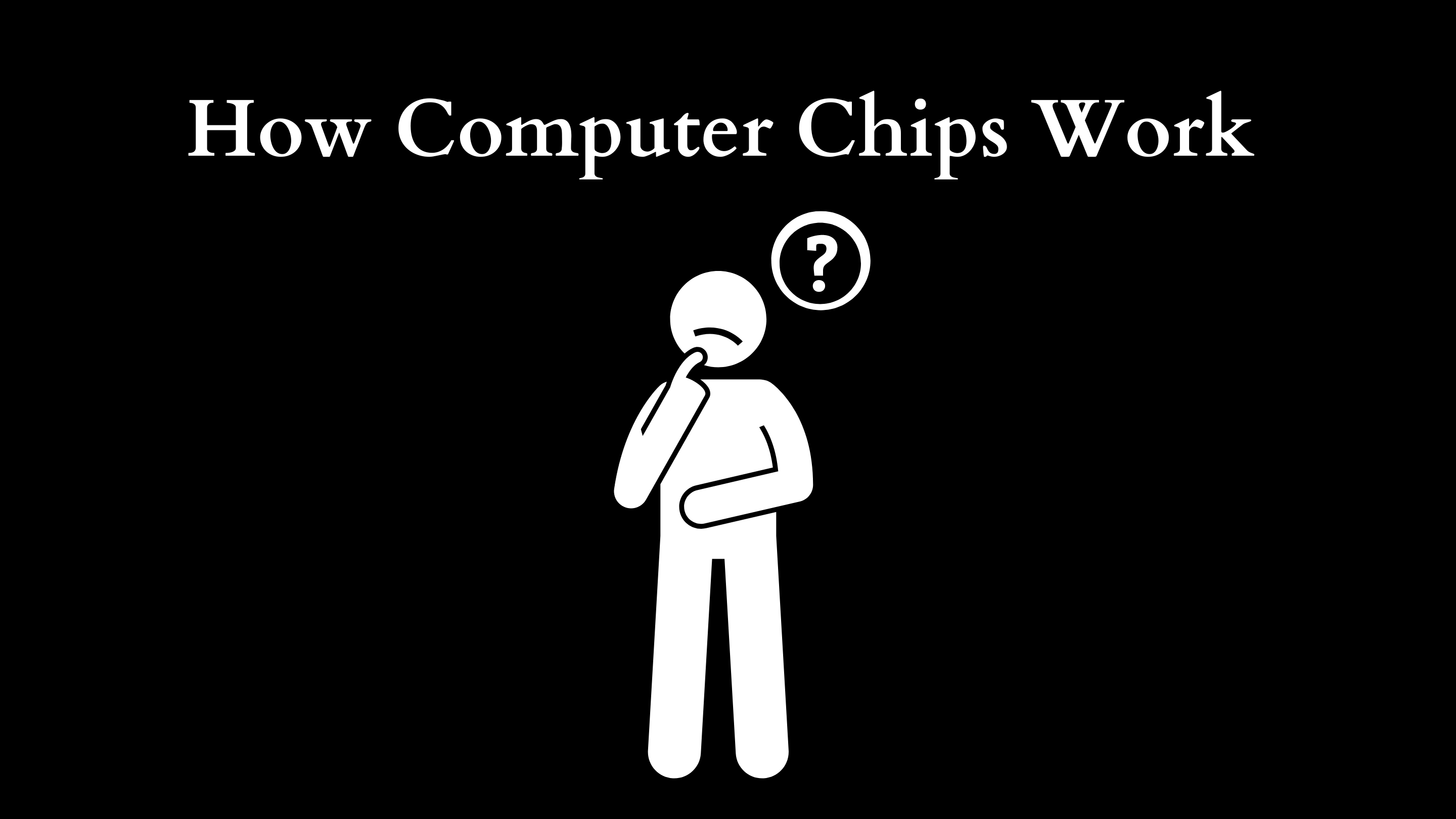Understanding How Computer Chips Work: A Deep Dive into the Heart of Modern Technology
Understanding how computer chips work is the main topic of this blog post, enjoy reading. In an era defined by rapid technological advancement, computer chips have emerged as the backbone of modern electronics. From smartphones to supercomputers, their functionality underpins the devices that drive our daily lives. But what exactly are computer chips, and how do they work? This blog post aims to unravel the complexities of computer chips, demystifying their roles, functions, and the science behind their operation.

What is a Computer Chip?
At its core, a computer chip, also known as a microchip or semiconductor, is a small piece of silicon that carries out the functions of a computer’s central processing unit (CPU), memory, and other critical components. These chips are composed of millions, and sometimes billions, of tiny electronic components called transistors. The miniaturization of these components has allowed for the development of incredibly powerful chips that can perform a vast array of tasks with remarkable efficiency.
The Structure of a Computer Chip
To understand how computer chips work, it is essential to explore their structure and components. A standard chip consists of the following key elements:
- Transistors: The fundamental building blocks of microchips, transistors act as electronic switches. They control the flow of electricity and can represent binary values (0s and 1s), which form the basis of all computations.
- Conductors: These are materials that allow electrical current to flow. Metal interconnects, typically made of copper or aluminum, connect the various transistors and components on the chip.
- Dielectric Materials: These insulating materials separate different conductive areas on the chip, preventing electrical shorts and ensuring proper function.
- Substrate: This is the base material upon which the chip is built. It provides mechanical support and thermal management.
The Functionality of Computer Chips
Computer chips perform their functions through a series of complex processes. Let’s take a closer look at the primary operations that occur within a chip.
- Logic Operations: The transistors within a chip operate using logical gates (AND, OR, NOT, etc.) that process binary input data to produce output. For instance, when transistors are combined into circuits, they can perform calculations, make decisions, and store data.
- Data Storage: Modern chips often integrate memory components, such as Static Random Access Memory (SRAM) or Dynamic Random Access Memory (DRAM). These components temporarily hold data, allowing for quick access by the CPU. Long-term storage is typically managed by separate storage devices, but the memory integrated into chips is crucial for performance and speed.
- Data Transmission: Computer chips also facilitate communication between various components, whether it be within the processor itself, between the CPU and memory, or across different devices. Buses and communication protocols play a vital role in ensuring that data flows smoothly and efficiently.
How Are Computer Chips Made?
The manufacturing of computer chips is a highly intricate process that involves multiple steps.
- Design: Engineers employ specialized software tools to create a schematic diagram of the chip, detailing how transistors and other components will be arranged.
- Wafer Fabrication: Silicon wafers are produced from highly purified silicon. The design is then etched onto the wafer using photolithography, which selectively removes silicon and deposits various materials to create the desired circuit patterns.
- Doping: This involves adding impurities to the silicon to modify its electrical properties, allowing it to function effectively as a semiconductor.
- Assembly: After the chips are fabricated, they are cut from the wafers and packaged. This packaging protects the chip and and allows it to be connected to a circuit board.
- Testing: Finally, each chip undergoes rigorous testing to ensure it meets performance standards and is free of defects before entering the marketplace.
The Evolution of Computer Chips
The history of computer chips business is a testament to human ingenuity and the relentless pursuit of progress. From the first transistor invented in 1947 to the development of integrated circuits (ICs) in the 1960s, each milestone has brought us closer to the powerful and compact processors we use today. The advent of Moore’s Law in the 1970s, which posited that the number of transistors on a chip would double approximately every two years, has driven the industry to continually innovate, leading to the remarkable capabilities of contemporary chips.
Future Directions in Computer Chip Technology
As we look to the future, several trends are shaping the evolution of computer chips.
- 3D Integrated Circuits: 3D chip stacking allows for greater density and improved performance. By layering multiple layers of circuitry, this approach minimizes space while maximizing processing power.
- Quantum Computing: The development of quantum chips seeks to revolutionize our understanding of computation. Utilizing qubits, which can exist in multiple states simultaneously, quantum chips promise to solve problems that are currently intractable for classical computers.
- Neuromorphic Computing: This emerging field aims to simulate human brain processes within chip architecture. Neuromorphic chips could potentially offer advances in artificial intelligence and machine learning, paving the way for more intuitive computing.
- Sustainability: As technology evolves, so does the awareness of environmental impact. Researchers are seeking ways to create chips that consume less power and reduce electronic waste, ensuring sustainability for future generations.
Conclusion
Computer chips serve as an indispensable component of our technological landscape, driving innovation across every sector. Their intricate design, rapid evolution, and boundless potential showcase the extraordinary capabilities of human ingenuity. Understanding how these chips work not only enhances our appreciation for the technology that surrounds us but also highlights the exciting challenges and opportunities that lie ahead in the realm of computing. As we continue to push the boundaries of what is possible, one thing is certain: computer chips will remain at the forefront of technological advancement, shaping the future in ways we can only begin to imagine.






